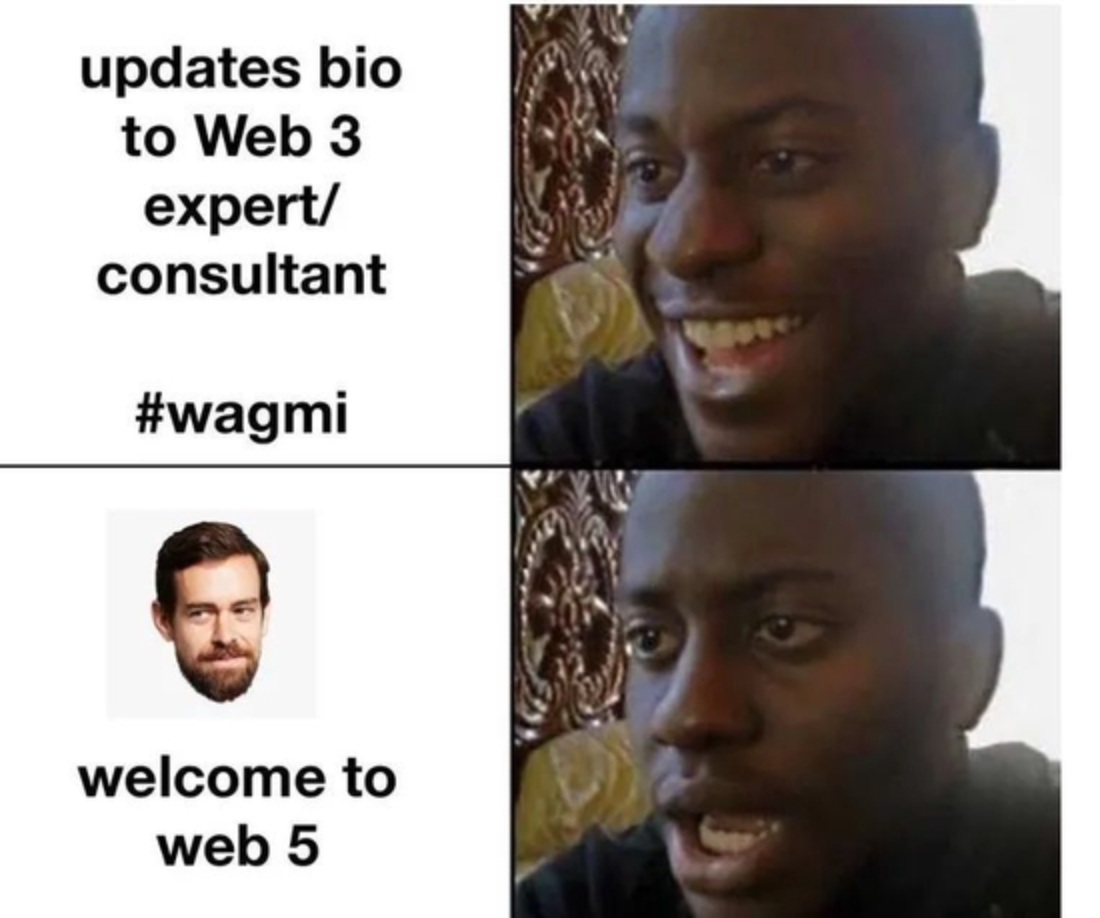Future of the internet and owning digital identities: Understanding web5
 Ayomikun Irewunmi
Ayomikun Irewunmi
The internet has remarkably evolved since its inception, with the rise of web1, web2, web3, and now the buzz of the next generation of the internet, “web5” (cringe right?). The world is still discovering web3, but Jack Dorcey, ex-Twitter CEO and current CEO of Square, is leading the promising future of the internet. Jack envisions web5 as a decentralized web platform that aims to address the shortcomings of web2, the current iteration of the internet. He believes users should be empowered with a self-owned identity and restored control over their data. Technology has shaped our world and made life easier, but there are some limitations of the current internet that led to the conceptualization of web5, such as the centralization of data, a lack of user ownership and control, security vulnerabilities, privacy concerns, and a lack of interoperability. One of the coolest features of web5 is the concept of verifiable credentials. Basically, this means you can have exclusive access to your data without any unnecessary third parties snooping around.
Web3 vs. Web5

Web3, the third generation of the evolution of the internet, is a decentralized application (DApp) built on multiple blockchain networks.
Web 5.0 is developed on the bitcoin blockchain by TBD, a company owned by Jack Dorsey. According to TBD, Web 5.0 is a decentralized platform that provides a new identity layer for the web to enable decentralized apps and protocols. They are not blockchain-based but can communicate with Decentralized Web Nodes (DWNs). This results in forming a peer-to-peer relaying network that exists independently of any public blockchain.
How does Web5 work—digital identity in a new online world?
In this digital day and age, we have become masters of juggling multiple online personas. We are digital bankers, customers, citizens, consumers, patients, students, and employees all at once. Our online lives have seamlessly blended with our real lives, blurring the lines between who we are in reality and who we are in the digital realm. But let's face it, establishing trust in this wild, wild web is no piece of cake.
With countless accounts and passwords to remember, it's like we're playing a never-ending game of memory challenges. And let's not forget the fact that our personal data has become the property of third parties. Who authorized that? Certainly not us!
Key technologies enabling web5
Decentralized Identifiers (DIDs): DIDs are unique identifiers that are owned and controlled by individuals, not by centralized organizations. They allow individuals to represent their online identities without relying on third-party platforms.
Verifiable Credentials (VCs): VCs are tamper-proof digital certificates that contain verifiable information about an individual's identity, qualifications, or other credentials. They can be shared and verified without the need for a trusted intermediary.
Decentralized Web Nodes (DWNs): DWNs are computers that store and share data on a decentralized network, eliminating single points of failure and enhancing data security.
Decentralized Autonomous Organizations (DAOs): DAOs are community-governed organizations that operate on blockchain technology, providing a framework for collective decision-making and ownership in web5.
Decentralized Web Applications (DWAs): DWAs are web applications that run on a decentralized network, offering greater privacy, security, and resistance to censorship compared to traditional web applications.
A glimpse into the future of web5 and owning digital identities
In the era of web5, which is not so distant, users interacting with web5 would own unique digital identities and have unprecedented control over their digital identities and data. Imagine a future where you can seamlessly manage your digital identity, effortlessly sharing verified credentials with employers, educational institutions, or financial institutions, all while maintaining complete control over your data. This is the promise of web5, a future where individuals are empowered, privacy is paramount, and trust is the cornerstone of online interactions.
Web5 is not just a technological advancement; it represents a paradigm shift in our relationship with the digital world. It empowers individuals, fosters trust, and promotes a more equitable and secure digital landscape. As the technology matures, we can expect to see a gradual transition towards a more decentralized and user-centric web5 ecosystem.
Subscribe to my newsletter
Read articles from Ayomikun Irewunmi directly inside your inbox. Subscribe to the newsletter, and don't miss out.
Written by

Ayomikun Irewunmi
Ayomikun Irewunmi
Designing for inclusion and growth.